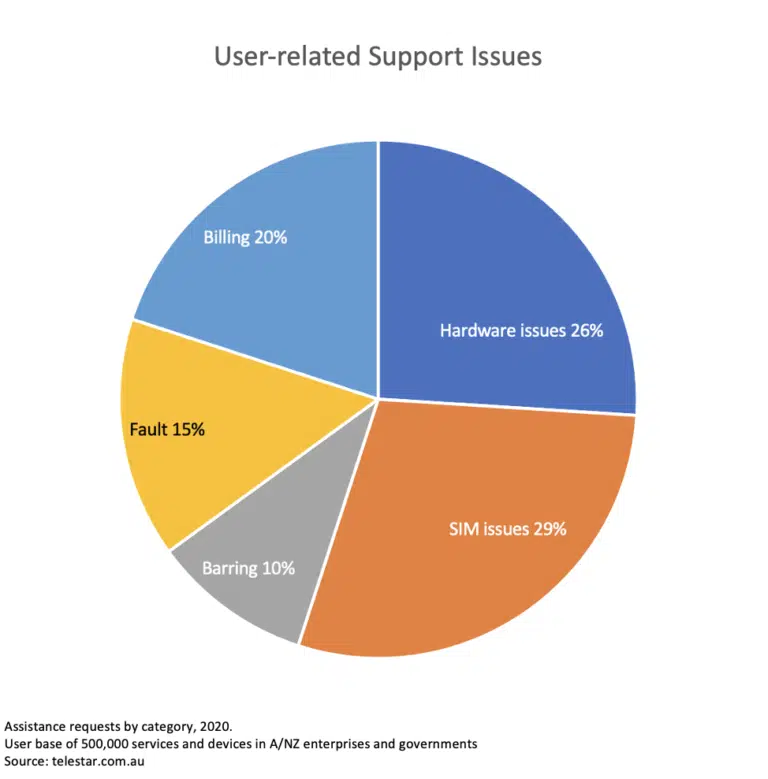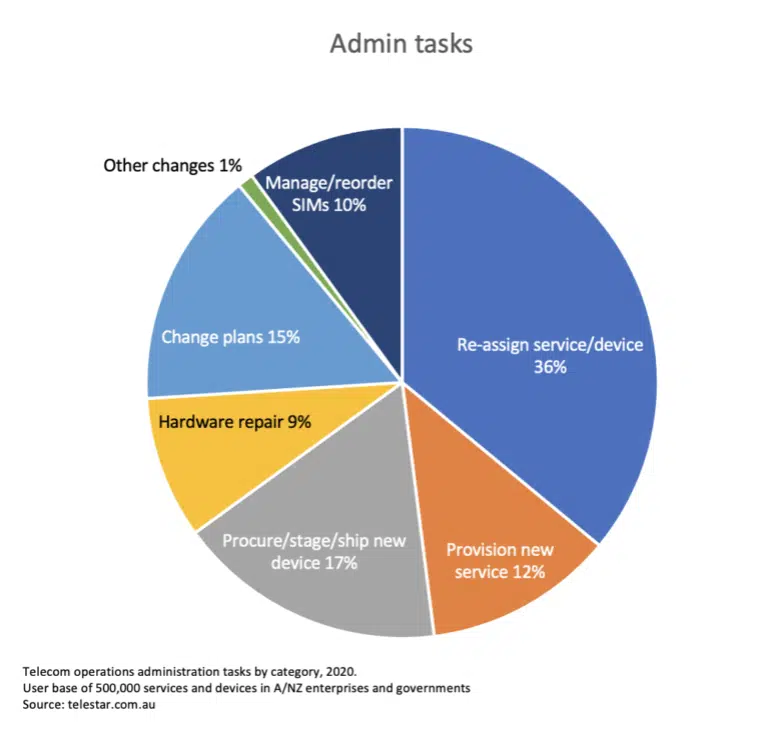
How did A/NZ firms’ telecoms work in 2020? The results are in.
Telestar provides outsourced management of telecoms services for government agencies and enterprises across Australia and New Zealand. With over half a million telecoms services and devices under management, Telestar has a unique insight into how enterprise telecoms fleets are really behaving.
2020 data is especially interesting, due to the effect of the COVID-19 pandemic. With enterprises and governments tacking to remote working and new processes, what trends did this cause in the support, admin and management of their telecoms?
Let’s take a look…
Trends in Telecoms Support and Admin

The biggest change in 2020 was the dramatic increase in the need for Telecoms Managed Services. On a per connected service basis, service events increased overall by over 12% year-on-year. Companies and their employees needed more help in managing and administering their telecoms services than ever before, and this was likely driven by the changes and uncertainties brought on by the pandemic. However, the overall makeup of the events was relatively unchanged.
Comparing the scale of support events (a request for assistance, a fault, etc.) versus admin events (actions necessary to operate and maintain the fleet) shows a reality quite different from many people’s perceptions. While classical ‘help desk’ services are critically important, it is the lower-profile work of operational administration which makes up the vast majority of work in enterprise mobility. This includes the mundane work of activating new services, procuring hardware, staging and shipping devices, loading cost centres, implementing plan optimisations, and allocating SIMs and eSIMs – all necessary to ensure employees have the communications tools they need to do their jobs when they need them.
Trouble tickets: SIM & Hardware issues top the list of potential productivity killers in 2020

SIM issues were the most common problem impacting end user productivity. These most commonly include SIM re-burns (due to re-allocated or re-used SIMs).
The second most common problem was hardware issues. This includes smartphone faults, user errors, losses and breakages.
This compares with 2019 when hardware issues were the largest category. With generally less hiring occurring during the pandemic, perhaps less new employees struggled with their hardware while on the other hand organisations re-allocated and re-used SIMs more frequently as new ways of working were explored.
Admin tasks: Re-assigning services & devices was 2020’s biggest admin burden

For the second year in a row, re-assigning services and devices was by far the most frequent admin task in 2020, reflecting the continued challenge for firms in managing their mobile fleets as their personnel and their org charts constantly change.
Although a smaller proportion than in 2019 possibly due to less hiring occurring during the pandemic, adding new services and devices continued to represent a significant part of the admin workload for many organisations, often due to corporate mobile expansion and/or IoT rollout. For some organisations, this was the result of a periodic fleet refresh.
Changing plans also represented a significant admin item, usually undertaken because of recommendations resulting from detailed billing analysis.
How Enterprise Telecoms Outsourcing works
Enterprise Telecoms outsourcers don’t just handle telecoms support; they also manage the admin necessary to keep enterprise telecoms services and devices running efficiently. They use specialised tools and experts, including automated bill validation and other optimisation techniques, to ensure best productivity and value from your telecoms services and devices.
Some organisations prefer to do this internally, although few have the specialisation to do it as efficiently as the telecoms outsourcing specialists. Today, over 80% of Fortune 500 companies outsource the management of their telecoms services and devices.